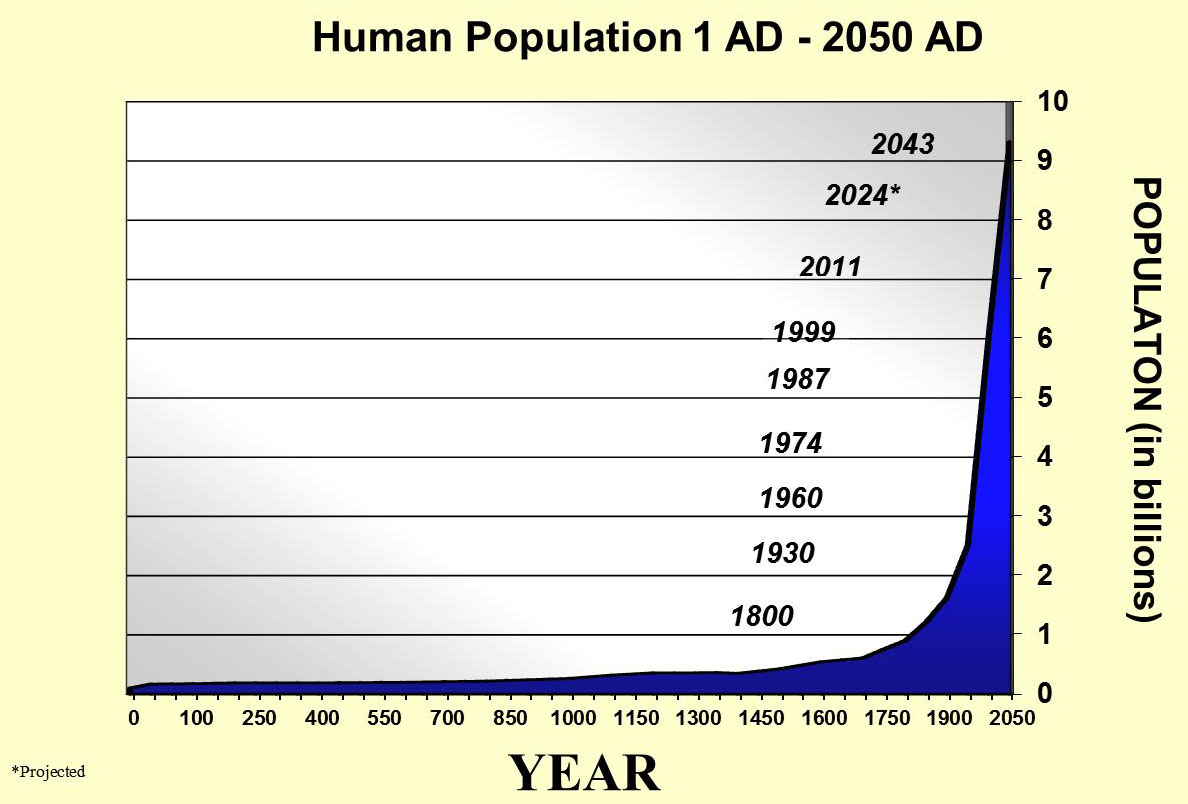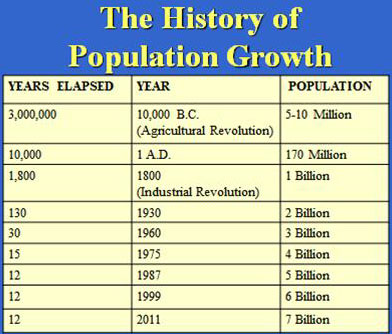Learn
Demography refers to the study of human populations. Demographers are scientists who study human populations and their changes. They look at how populations have changed throughout history, and they make comparisons and predictions based on how the human population has historically changed. These scientists also study properties, such as economics and social structure that affect population growth. Just like with all populations, human populations change in accordance with birth rates, death rates, immigration and emigration of individuals.
The following equation shows the components of population change:
If birth rates are greater than mortality ratesdeath rates and there is no net migration, the population will grow. If mortality rates are greater than birth rates and there is no net migration, the population will decrease. As you can see, you also have to factor in migration when looking at population growth. If emigration is greater than the birth minus deaths then the population will decrease.
Anthropologists estimate that humans have been around for the last 3 million years. Early humans lived as hunters and gatherers, which kept population numbers low. In 2000, the world's population reached 6.1 billion people. Today, the world's population stands at over 7 billion and is projected to reach over 9 billion in the next 50 years.
Look at the J-Curve graph below to see how the Earth's population has changed since the year 1 AD and how it is predicted to change through the year 2043. Look at how long it took for the human population to reach each billion. What factors do you think caused the number of years between billions to decrease?

Look at the chart and notice the two historical events that occured that had significant impact on population growth.

The first major historical event to affect human population growth was the Agricultural Revolutionbeginning around 3-10 million years ago and lasting until the late 18th to early 19th century. During this time period, there were developments in growing and harvesting food. This made food more available, thus helping increase the population.
 Read The Agricultural Revolution and About Money: The Agricultural Revolution to learn more.
Read The Agricultural Revolution and About Money: The Agricultural Revolution to learn more.
The second historical event was the Industrial Revolutionbeginning in the 19th century. This brought people from small, scattered farms to cities where they lived closer together and worked in factories to produce items more efficiently and quickly.
There were also advancements in medicine and healthcare, which meant that people could be treated for illnesses more effectively. This helped to increase human life expectancy, which caused the world's population to grow. As time has progressed, there have been preventative developments in medicine and technology that have kept people from getting sick, such as prenatal vitamins and vaccinations. Both of these have increased the average life span and have helped improve infant mortality rate.
 Read History: Industrial Revolution to learn more.
Read History: Industrial Revolution to learn more.
View the following video to see how industrialization has affected human population growth. |
Through human history, there have also been factors that have negatively impacted human population growth. Pandemics have caused the human population to decrease. In the 1300s, a plague swept across Europe wiping out almost one third of the population. In 1918-1919, there was an influenza pandemic that devastated the United States and the rest of the world. It is estimated that between 20 and 30 million people lost their lives worldwide with more than 675,000 Americans dying.
 Read more about the plague in Europe and the worldwide influenza outbreak:
Read more about the plague in Europe and the worldwide influenza outbreak:
The Earth's human population continues to follow an exponential growth model; it continues to increase without reaching the carrying capacity of the world. Advances in agriculture, industry, and medicine/healthcare have allowed the human race to extend the number of humans that the earth can support, and people are able to live in places that would otherwise be uninhabitable for humans, such as desert regions with little water and extreme cold places. Through agriculture and industry, humans are able to mass produce food and have the technology to distribute this food to vast areas. Humans have also benefited from healthcare advancements that allow for preventive care and medicines that can combat disease that once killed humans and decreased human lifespan.
A few questions probably come to mind after learning all of this population information.
- When will the human population reach the Earth's carrying capacity?
- How is the human population already negatively effecting the environment?
- Can the negative effects be stopped or reversed?